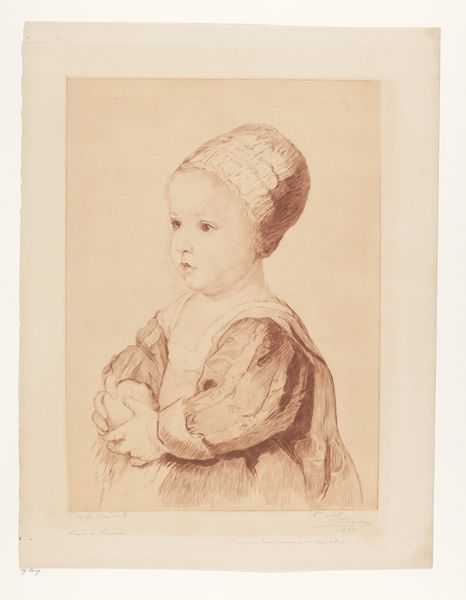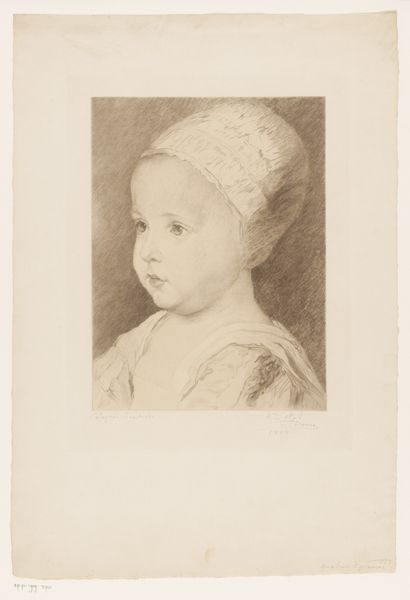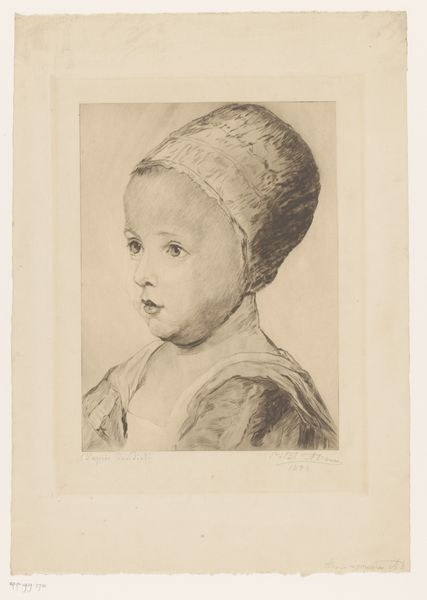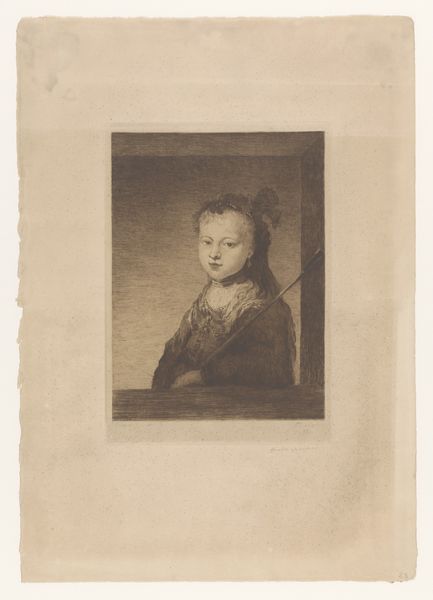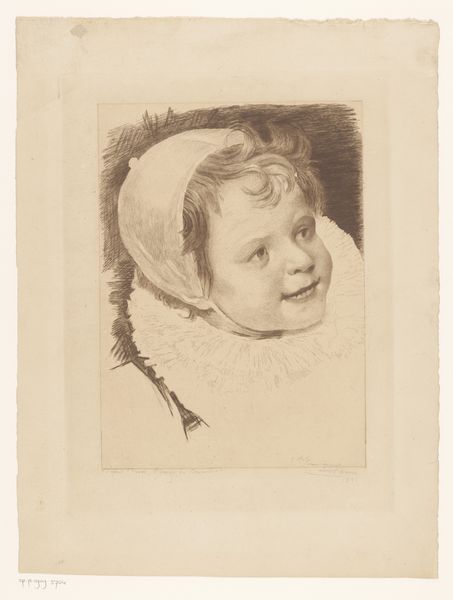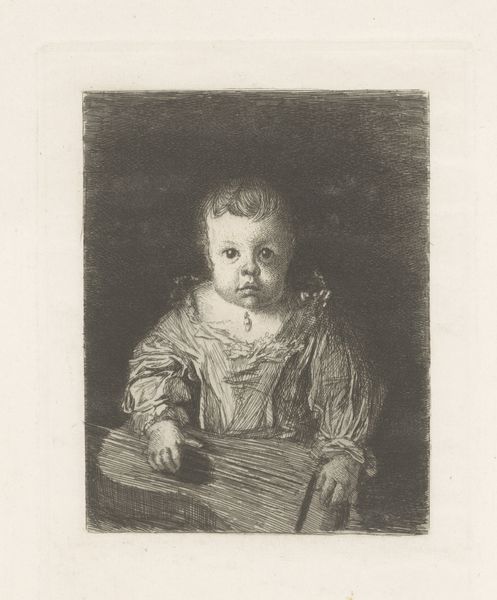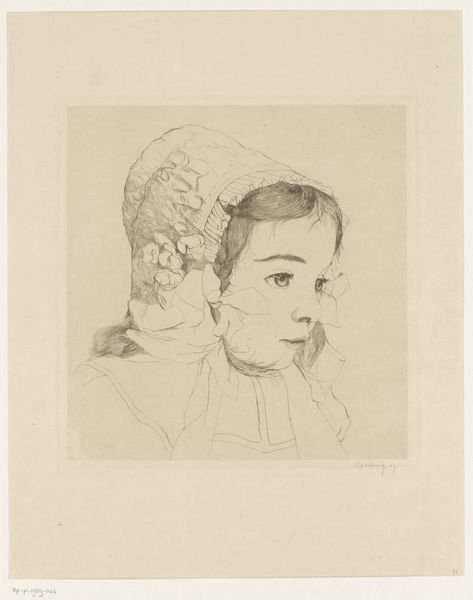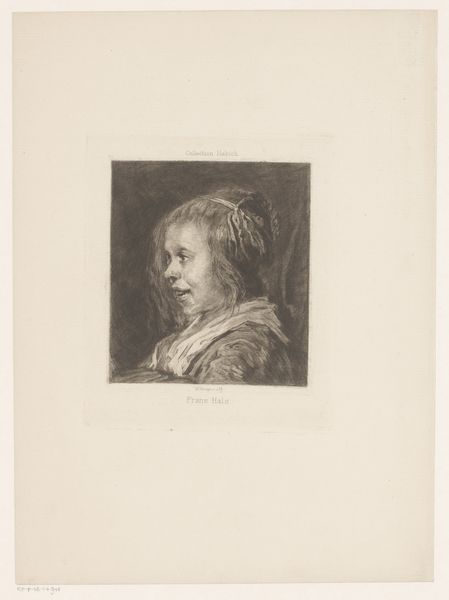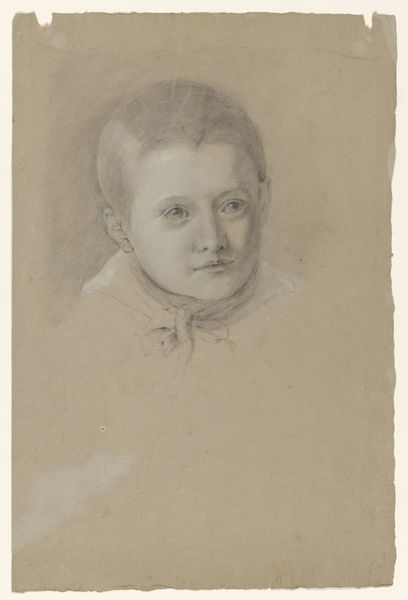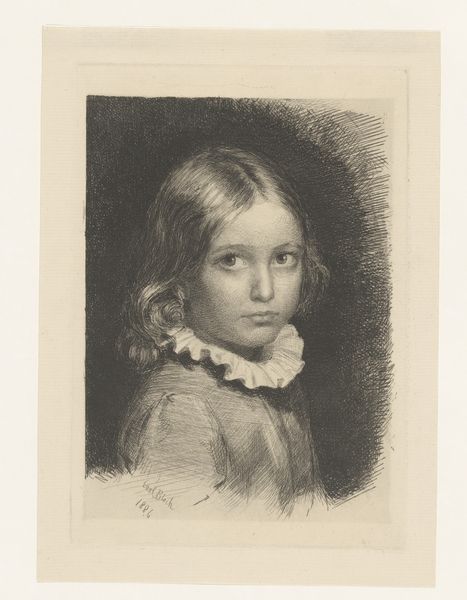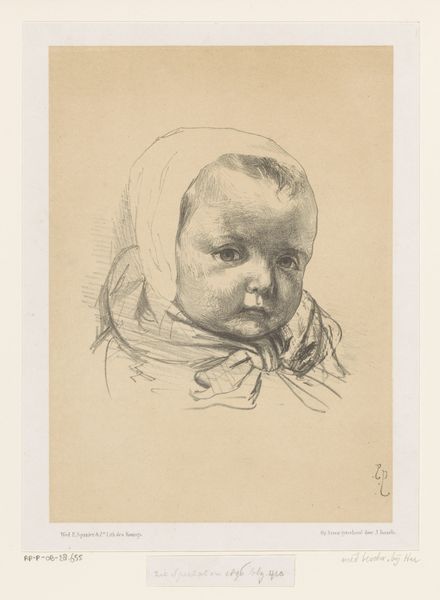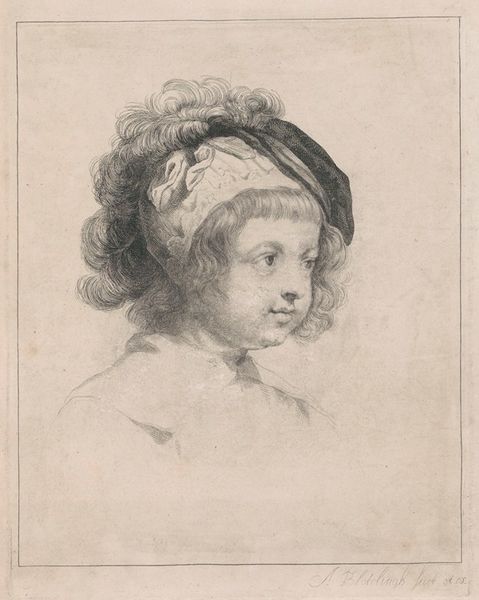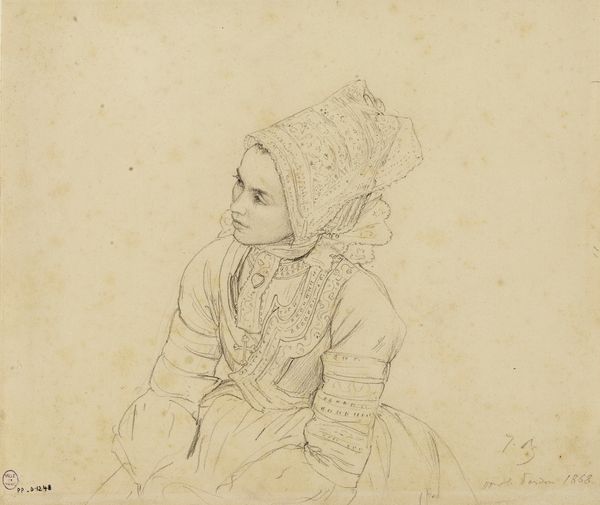
drawing, pencil, charcoal
#
portrait
#
pencil drawn
#
drawing
#
pencil sketch
#
charcoal drawing
#
pencil drawing
#
pencil
#
portrait drawing
#
charcoal
Dimensions: height 405 mm, width 553 mm
Copyright: Rijks Museum: Open Domain
Curator: Here we have a portrait from 1896 attributed to Auguste Danse, simply titled "Portret van een onbekend kind" or Portrait of an Unknown Child. The medium seems to be pencil and charcoal on paper. Editor: My first impression is one of softness, an almost ethereal quality. The shading is remarkably subtle, lending a gentleness to the subject. Curator: Absolutely. It’s a very delicate portrayal. The unknown child is depicted with a sense of quiet dignity, and the artist really captures an inherent innocence of childhood. Look at the lace bonnet. It's rendered so meticulously, it gives us insight into a particular cultural aesthetic and period. This detail alone speaks volumes about societal values and class. Editor: Indeed. Formally speaking, the composition is rather simple, yet effective. The child is positioned slightly off-center, drawing our gaze to the soft curvature of the face, framed perfectly by that bonnet. The muted tones contribute to the overall sense of serenity, with gradations offering volume, while maintaining the delicate feel. The crosshatching also makes you realize the sheer detail the artist invests. Curator: Right. The unknown is central to its lasting appeal, prompting each viewer to consider the narrative and project a personal interpretation of this child’s identity. Could they represent all children of a certain era, burdened and also free? Or maybe the crosshatching mimics memory; how one marks information and experiences for future exploration. Editor: Interesting point. Perhaps Danse intentionally left the identity obscured, allowing us to focus solely on the aesthetic qualities of childhood—its innocence and fragility, rendered through a mastery of form. It begs a critical question of any art-- whose identity takes center stage. Curator: So true, we can still find meaning by filling in the gaps using our knowledge, historical, iconographical, even our own experience and empathy. Editor: What's fascinating is the duality: it captures specificity with texture and detail while making it abstract and universal, provoking conversation about portraiture itself. Curator: And this is what is so important, for both the viewer and us: not just what an artwork is, but what it can be.
Comments
No comments
Be the first to comment and join the conversation on the ultimate creative platform.
